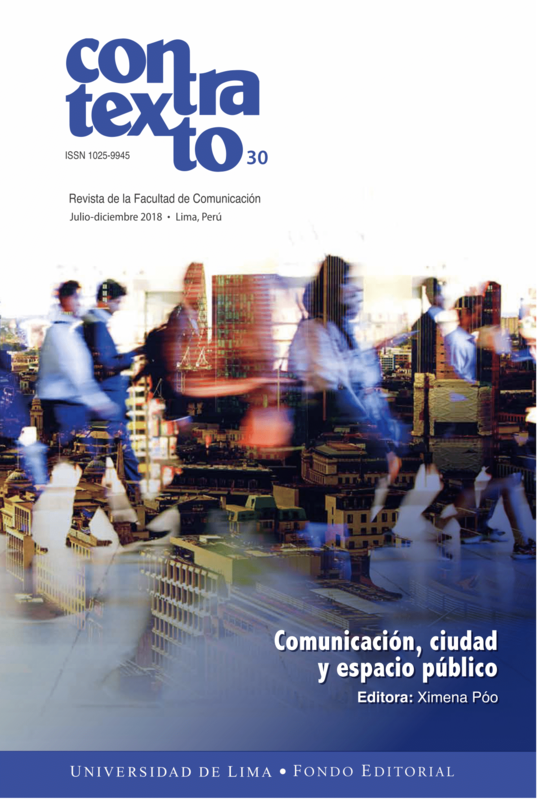Narrating to know who we are. Graffiticity and travelling vision: the context of words, images and the city
DOI:
https://doi.org/10.26439/contratexto2018.n030.3158Abstract
Graffiticity is a space of action in which graffiti artists esthetically take the city and transform it into an image-producing platform. The proposal of this essay is a reflection on the urban landscape as a narrative through the action of graffiti artists, contemporary agents of communication and appropriation of urban space. Said space is a territory of moving metaphors that, in its ephemeral nature, gathers points of dialectical tensions; a landscape rhymed by the interaction of the moving observer that produces glances in the urban interstices, since the observer’s body is also there wanting to interact. The bystander can perceive fragments of various cities contained in the city, where graffiti artists impose a communication that goes from the aggressiveness to the passivity of the observer and seek to create a territory of hybrid dialogues where tensions, belonging and identity converge. Thus, graffiti acquires a political-social base, generating debate between what is public and private, and questioning the proper concept of art. That foundation is composed of lines or rhizomes, without a center, where the need for identity and belonging emerges.
Downloads
Downloads
Published
Issue
Section
License
All of the works published are licensed under a CC BY 4.0 Creative Commons Attribution license. (updated on March 1st 2021)
The content of the journal may be shared in any material or format. The content may be adapted, contributed upon and transformed. Both possibilities are only permitted in so far as they complete the following conditions:
- Attribution: Credit must be given where it is due, a link to the license must be provided and changes, if made, must be indicated. This should be done in the manner deemed appropriate, without suggesting that the licensor promotes you or your use of the material.
Ownership rights
The patrimonial rights for Contratexto are published under a Creative Commons BY 4.0 license, allowing authors to keep the patrimonial rights to their work without restrictions.
If a work published in Contratexto were to be copied, distributed, spread, or any other activities contemplated in the aforementioned license, the author(s) and the journal must be mentioned visibly and expressly.
Self-archive
This journal allows and encourages authors to post items submitted to the journal on personal websites or institutional repositories both prior to and after publication, while providing bibliographic details that credit, if applicable, its publication in this journal.


